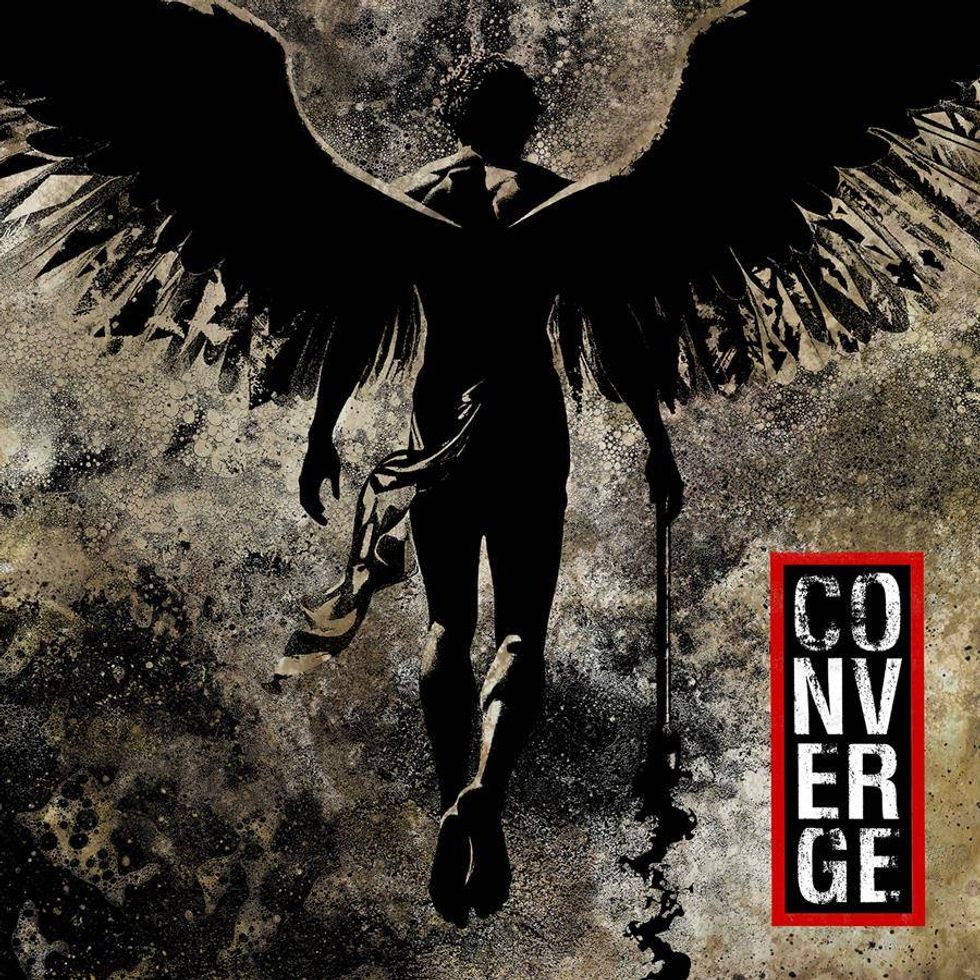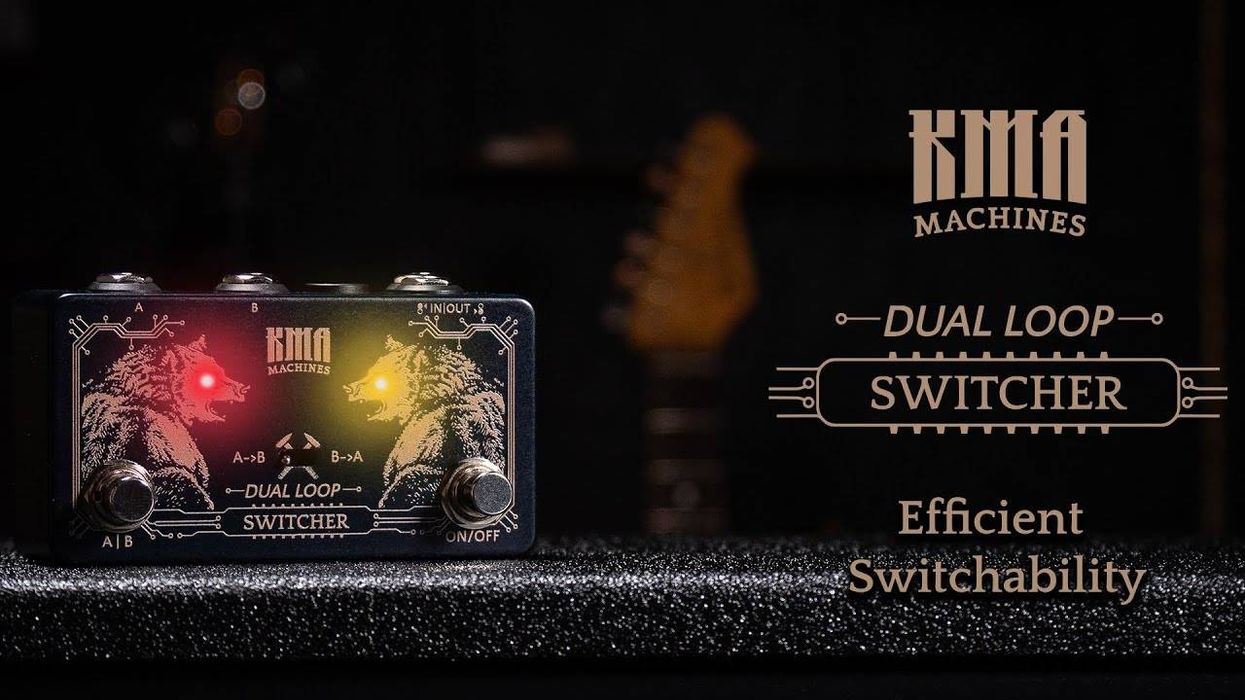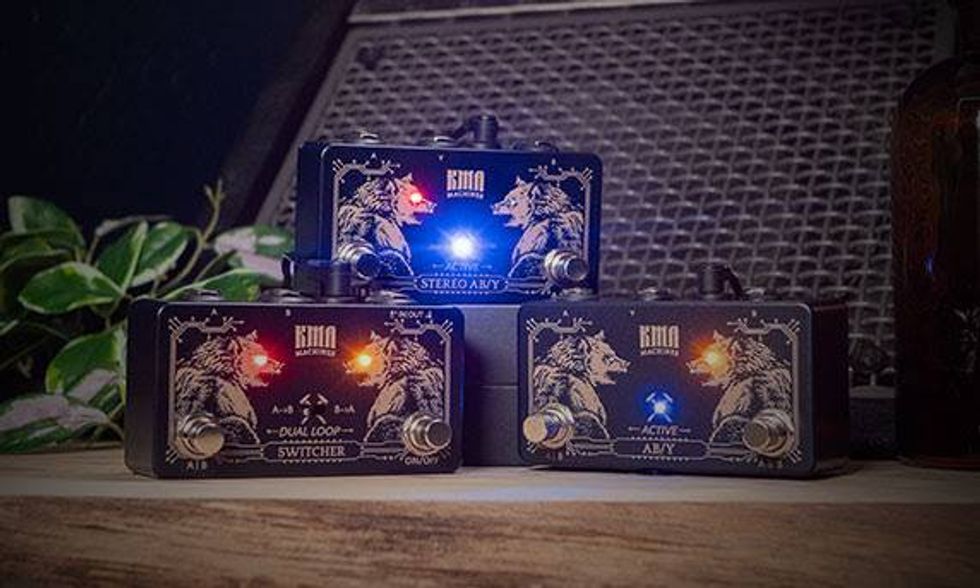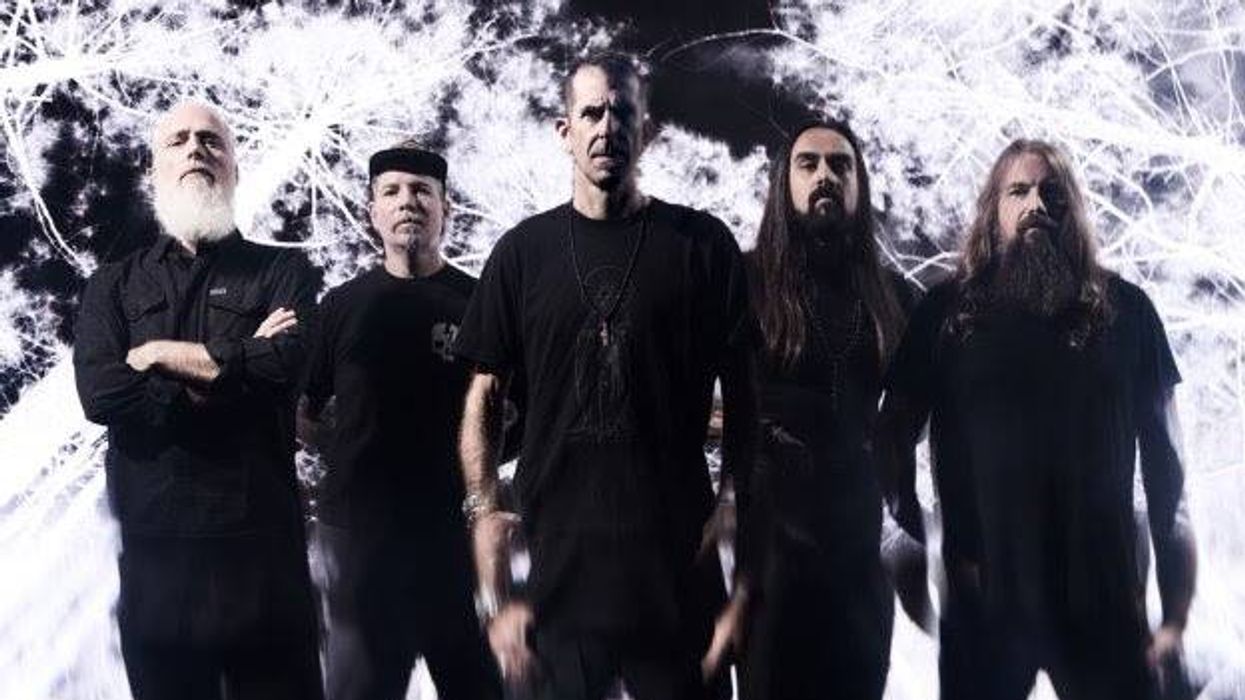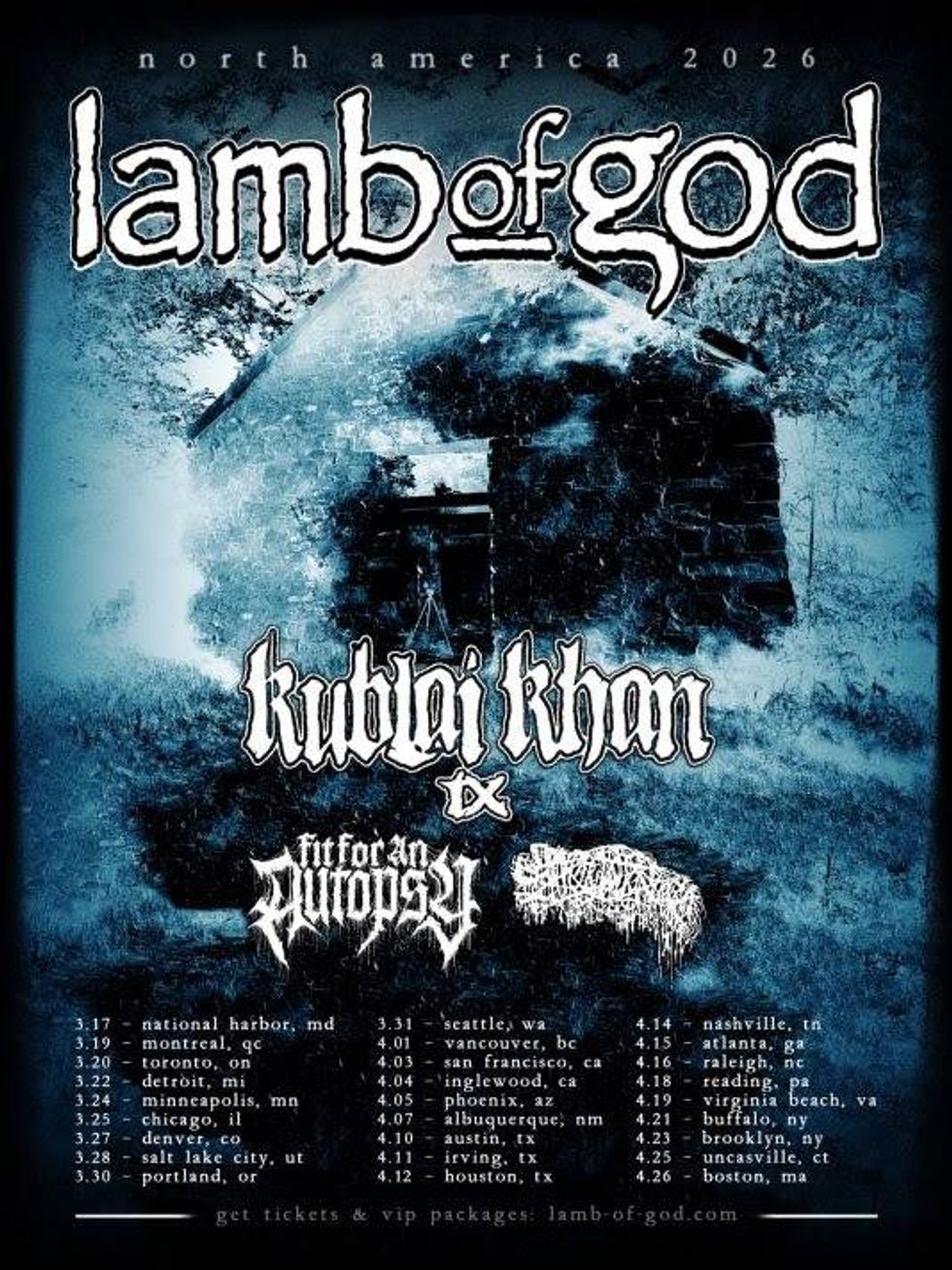Meet the Wampler Catacombs and the Syntax: The Catacombs offers delay and reverb pedal with 11 iconic sounds in one intuitive package. While the the Wampler Syntax features a compact and versatile MIDI program selector, tap-tempo controller, and amp channel switcher.
Ever since Brian Wampler first picked up a guitar, he's been chasing the perfect sound - a quest that led him to build pedals in the first place. One challenge kept coming up, both for him and the countless musicians he's talked to: the struggle to have a wide range of sounds with complex editing capabilities while keeping the pedal interface manageable. Musicians either compromise on versatility or sacrifice precious space. Brian knew there had to be a better way. That's why he created the Catacombs - a pedal that eliminates the compromise altogether. It packs 11 of the most popular delay and reverb sounds into one intuitive, powerful package. Whether you're after a trusty digital delay and a plate reverb or a musical shimmer and a spaced out echo we have you covered!
The team at Wampler have worked for a long time on ensuring Catacombs will become an indispensable part of your rig. Each program offers tap-tempo control and can be saved into one of the pedal's eight front panel preset locations for instant recall. Delays and reverbs can be run in Stereo, in parallel or in series. But it doesn’t end there - the pedal also comes with a complete software version as a plugin for your DAW in AAX, AU, and VST3 format for both Mac and PC. The Catacombs plugin is FREE to all customers that register their Warranty online ($49.99 if purchased separately).
Legendary Delays
When designing the Catacombs, Brian wanted to put a whole universe of sonic textures at your fingertips. With six delay programs, you can feel the warmth and depth of analog delays (ANLG), the harmonic nuances of a Bucket Brigade Device delay (BBD), or the nostalgic modulated vibe of classic artisanal tape and mechanical delays (TAPE). Feeling adventurous? The other-worldly Echo-Space Delay (SPC) awaits. The favorite Wampler Faux Tape Echo (FTE) and an accurate recreation of the classic 2290 digital delay (DIGI) also feature. Each setting offers tap-tempo control and can be easily saved into one of the pedal's eight front panel preset locations for instant recall. It's like having a studio's worth of delay effects right at your feet.
Iconic Reverbs
But he didn't stop at delays. The Catacombs also houses five finely tuned reverb programs that Brian and his team honed to perfection. With just a twist of a knob, you'll discover expansive halls (HALL), a warm vintage plate (PLT), and that classic spring reverb (SPR) with plenty of "drip." The shimmer reverb (SHMR) allows a whole new layer of sonic texture, especially when paired with an expression pedal, and the intimate ambiance of the ROOM setting creates that perfect studio reverb. Just like the delay programs, each reverb is easy to control and can be quickly saved into one of the eight onboard presets. The Catacombs is all about giving you the tools to shape your sound effortlessly.
Stompbox-like Control
Like the Terraform and Metaverse before it, the Catacombs is designed to be as quick to dial in as possible. We replaced confusing menus and fiddly touch screens with clearly marked knobs you can adjust on the fly. Controls for Time, Feedback, Modulation, and Level (with Alt functions for each effect type) put all the essential tools right at your fingertips.
Digital Power with an Analog Soul
In creating the Catacombs, Brian wanted to blend the best of both worlds. It uses a
high-performance DSP engine to bring each effect to life with authentic character, and gives you eight front panel preset locations where you can save and instantly recall your favorite settings. If you're looking to expand even further, you can access up to 128 presets with full MIDI control, it has optional stereo routing, a parallel or serial switch, and an assignable expression pedal input to control any parameter (or multiple parameters) in real time. It's a pedal that can grow with you, adapting to any musical situation.
Brian Wampler’s attention to detail and commitment to designing the best and most player friendly products out there is second to none. Those qualities are on full display within the Catacombs. From its convenient form factor to its flexible controls and full MIDI implementation via mini-TRS jacks, the Catacombs is all Wampler.
- Studio quality conversion 48 kHz sampling rate with 24-bit audio
- Full 20Hz to 20kHz frequency response
- Studio-quality vintage and modern effects - 6 Delays and 5 Reverbs designed and realized in-house at Wampler
- Simple user interface making your sound design instantaneous
- All parameters controllable via an outboard expression pedal
- 8 onboard preset locations to save your favorite patches, 128 total via MIDI
- Full MIDI control with CC and PC commands and MIDI clock compatibility
- True Stereo or Mono I/O
- Complete set of AAX, AU, and VST3 plugins FREE when pedal registered online
- Pedalboard friendly enclosure with minimal footprint
- Power draw - 9V DC center pin negative, external supply only: 130mA at 9V
- Dimensions : 4.5” x 3.75” x 2.25” (114 x 95 x 56mm) Weight: 2 pounds (910g)
- Includes Wampler’s limited 5-year warranty
- Designed and Built in the USA
The Wampler Catacombs carries a street price of $299.97.
For more information visit wamplerpedals.com.
Wampler Syntax
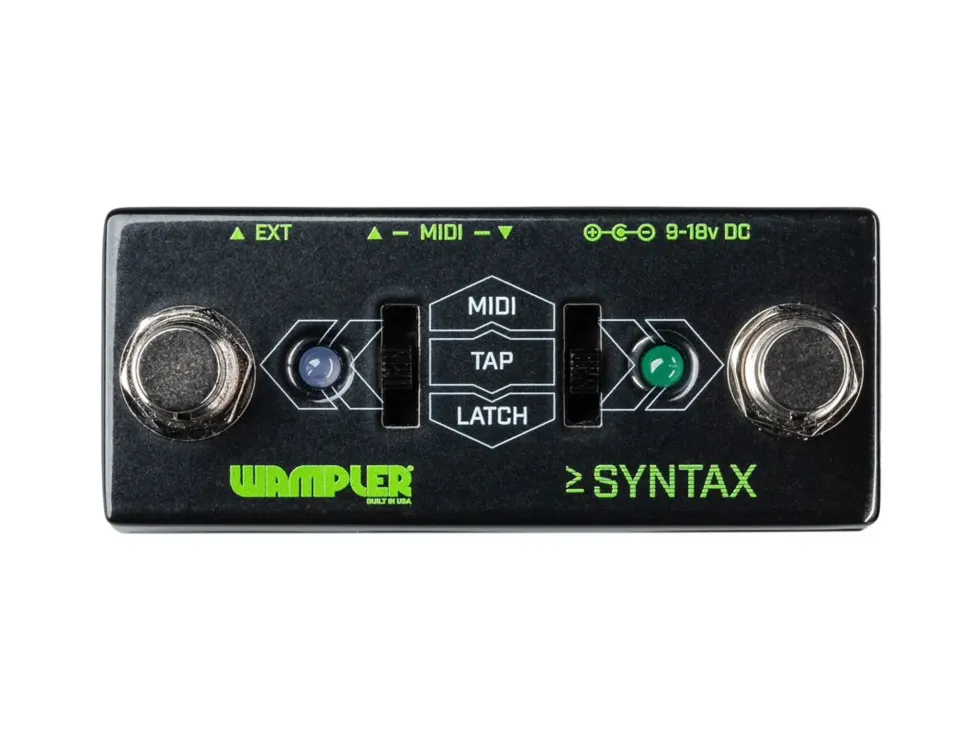
The Wampler Syntax Rig Control Pedal offers dual-sided functionality and easy setup via slide switches, and seamless integration with your favorite gear.
Let me know if this sounds familiar: you have a powerful effects pedal with a ton of built-in features, but they're buried under menus. The onboard footswitches won't cut it, so you add a dedicated MIDI controller, maybe a tap tempo pedal, maybe an external footswitch. Before you know it you have removed the convenience that an all-in-one pedal was supposed to offer.
Brian Wampler feels your pain. That's why he designed a dual-sided MIDI program selector, tap-tempo controller, and amp channel switcher and put it in a tiny housing. We call it the Syntax: a micro-format, multifunction switcher that lets you go deep with your favorite delays, modelers, amps, and other gear with the press of a footswitch.
Effortless Setup
Syntax has way more power than its small enclosure suggests. Even more impressive is you get all its functionality via simple, independent slide switches. A quick slider push can set one footswitch to scroll MIDI program changes while the other taps out your delay's tempo. Or connect Syntax to your amp in latching mode to swap channels. It's up to you, and it really is that easy.
MIDI Switching from a Micro Pedal
Syntax is a full-fledged MIDI preset controller in a mini-stomp housing. Able to output PC messages 1 through 8, this little stomp can set presets on all your favorite MIDI-enabled gear - including the Catacombs, Metaverse, and Terraform. All three can be daisy-chained together via MIDI and synchronized presets can be selected from the Syntax with ease. No complex menus, just a simple setup and plug-in, and you're ready to scroll through up to eight of your favorite tones. With a dedicated MIDI In port it can also be integrated into a larger MIDI environment.
Tap Tempo & Latching
Here's something Brian has always thought: why should we settle for pedals that do just one thing when they could do more? Latching and momentary footswitches might look the same externally but they perform different and equally important functions with different rigs, so he figured, why not create a pedal that can handle both? Want to switch amp channels or toggle effects seamlessly? Or maybe you need a rock-solid external tap tempo? You got it. It's all in the Syntax, ready to adapt to any rig you throw at it.
A Lot More Control in A Lot Less Space
Whether you lean heavily on MIDI, need tap-tempo for your favorite delay, or want to free up some pedalboard real estate for a new Catacombs (hint, hint), the Wampler Syntax is the perfect choice. Designed to be placed either horizontally or vertically on your board, it works seamlessly with all digital Wampler pedals, as well as your other favorite gear. It brings your entire rig together while giving you even more room to expand.
Brian Wampler’s attention to detail and commitment to designing the best and most player friendly products out there is second to none. Those qualities are on full display within the Syntax. From its convenient form factor to its ease of use and versatility, the Syntax is all Wampler.
- Rock solid construction and high-grade components selected for optimal performance
- Compact 2 footswitch preset switching remote via MIDI (PC1-8)
- Latching and momentary function through Ext out TRS socket - function selectable via dual slide switches
- Dimensions: 1.5” x 3.5” x 1.5” (38.1mm x 88.9mm x 38.1mm) - height excludes knobs and switches
- Power draw: 20mA at 9V - 18V 9-18V power jack – DC supply only, no battery connection within
- Includes limited 5-year warranty
- Built in USA
The Wampler Syntax carries a street price of $99.97.
For more information visit wamplerpedals.com.
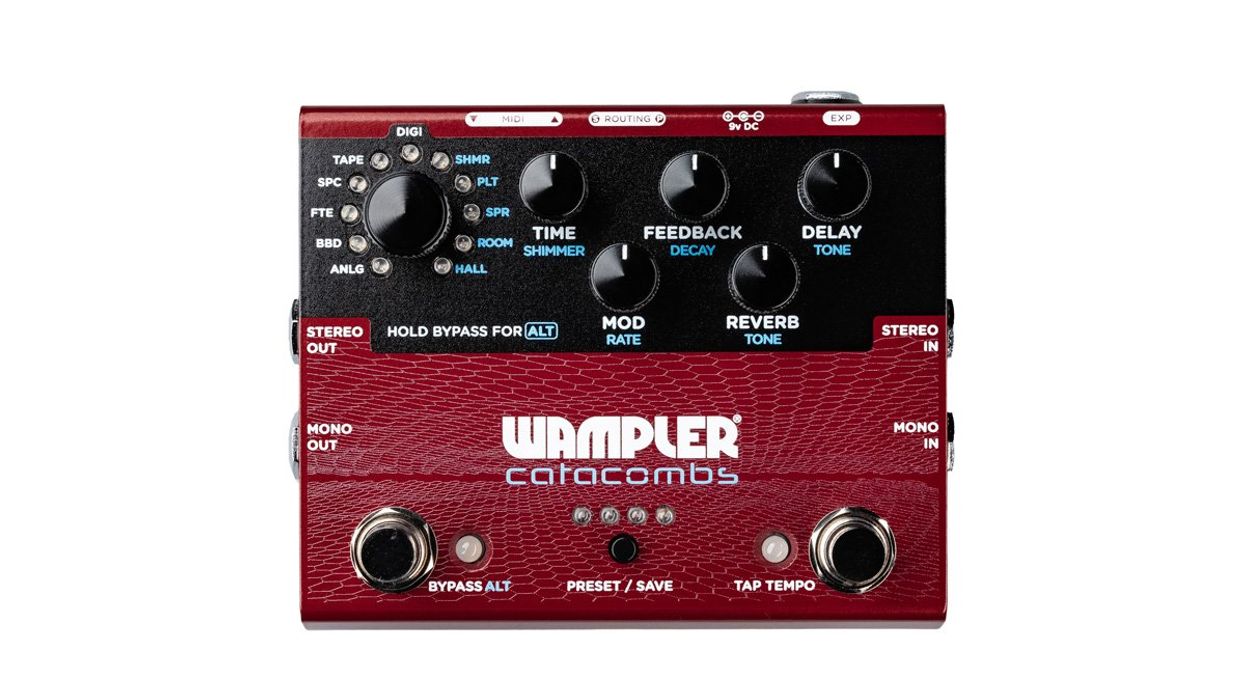


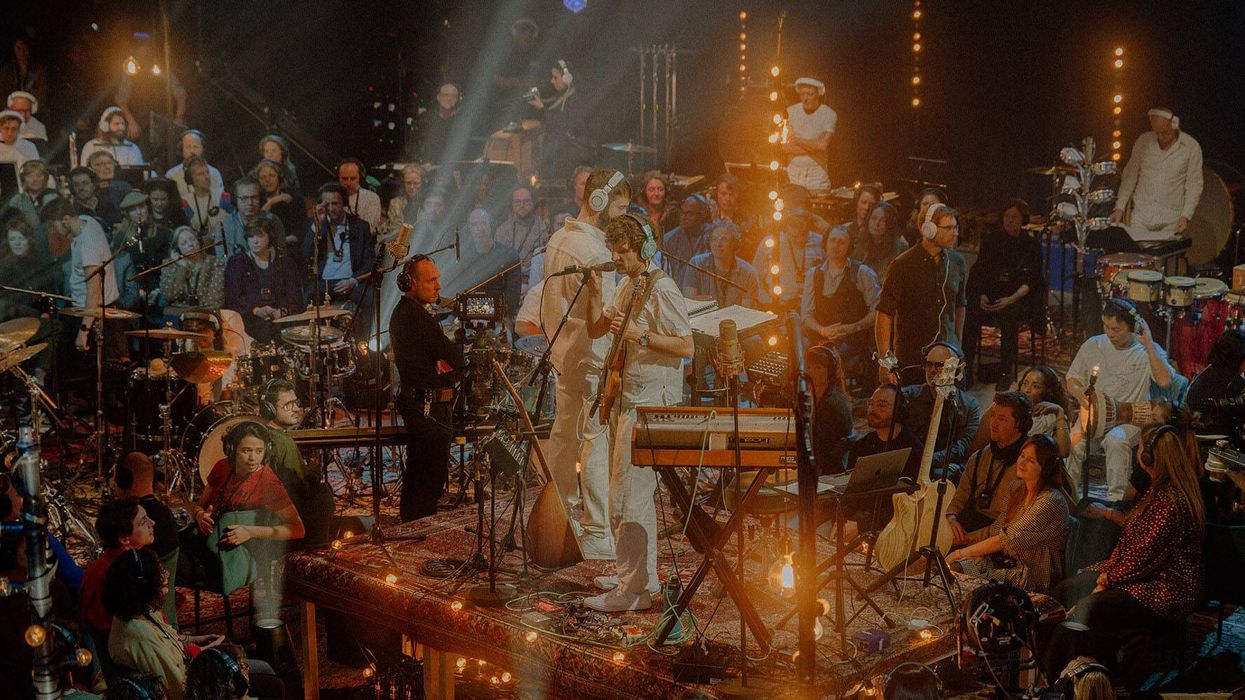
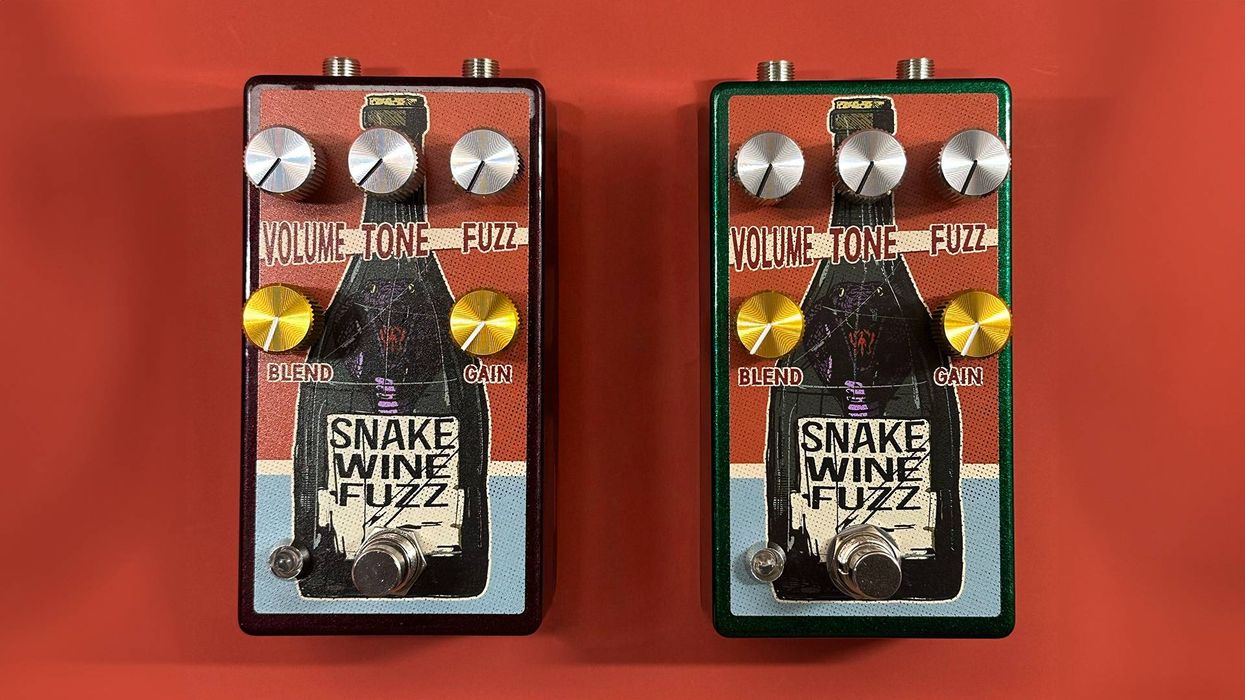

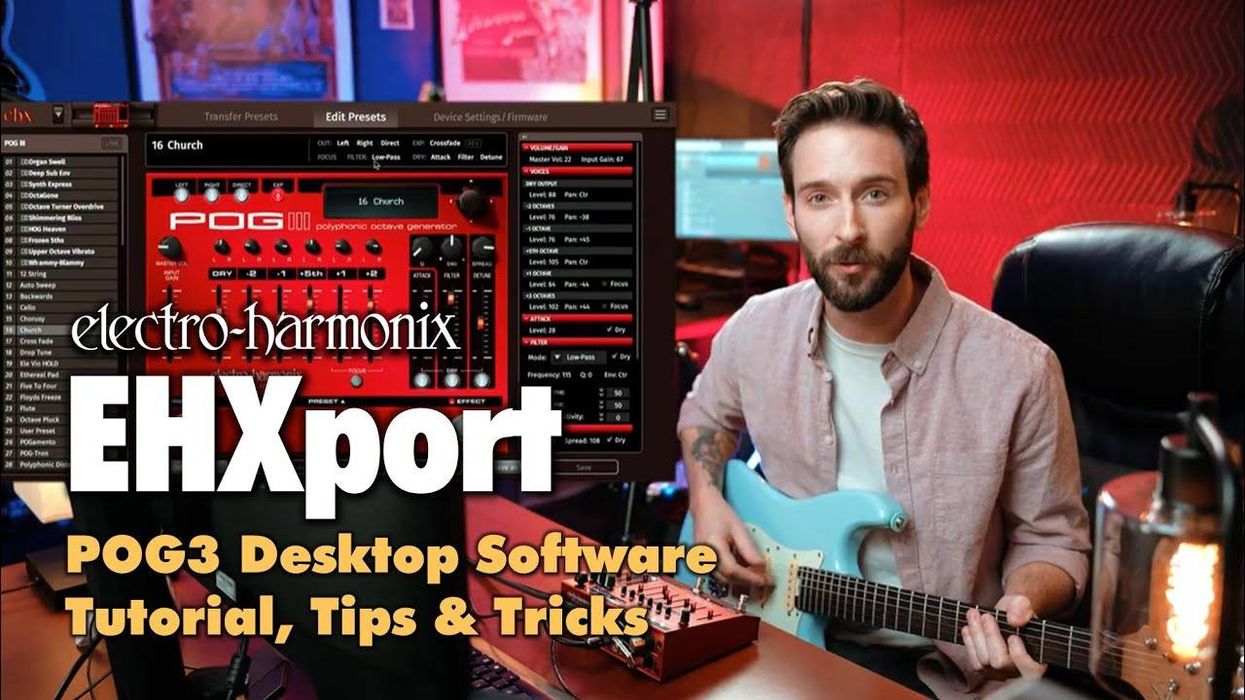

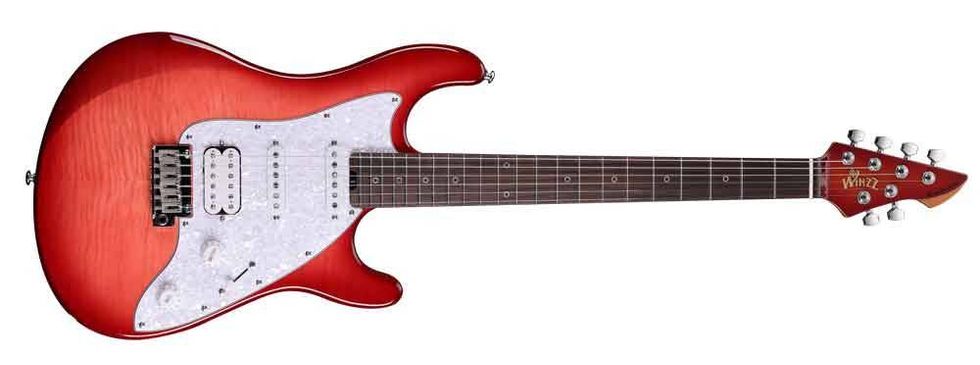




![Devon Eisenbarger [Katy Perry] Rig Rundown](https://www.premierguitar.com/media-library/youtube.jpg?id=61774583&width=1245&height=700&quality=70&coordinates=0%2C0%2C0%2C0)


